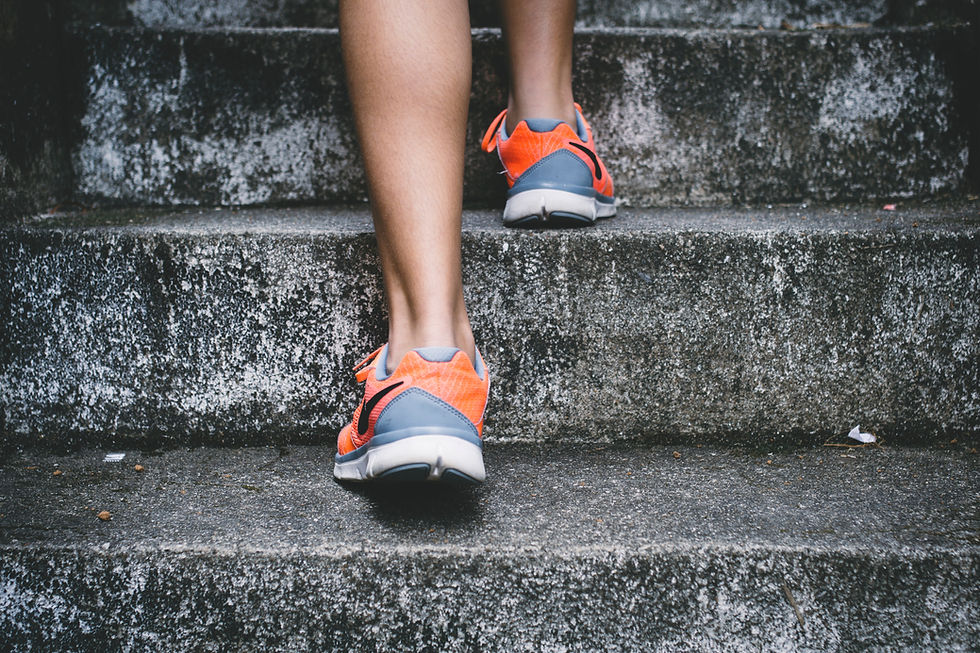
"Only a mobile creature needs a brain."
- John J. Ratey, M.D., from Spark: The Revolutionary New Science of Exercise and the Brain
The above statement is based on the observation scientists have made that animal species that do not move, do not have brains. Also animals, such as sea quirts, that start out with brains while they are mobile babies but eventually settle in one spot on the sea floor, lose their brains through atrophy because they are no longer needed. Makes you wonder if something similar might be happening to those of us humans who spend most of the day with our ass glued to an office chair, eh?
"That which we call thinking is the evolutionary internalization of movement," says the neuroscientist Rodolfo Llinas. The evolution and function of the brain is closely tied to a species's movement needs. So it should come as no surprise to us that exercise and movement has a PROFOUND impact on the brain and learning. Studies show that exercise increases brain-derived neurotrophic factor (BDNF), a protein that is often described as fertilizer for the brain. BDNF builds and maintains brain cell circuitry. It makes neurons sprout new branches and improves the signal strength of brain synapses. This gives the brain the ability to absorb, process, and remember information. Exercise also stimulates neurogenesis, which is the spawning of new brain cells.
Want to learn a better way to memorize lines? Check out my FREE MASTERCLASS, Memorizing Lines the Smart Way
Exercise is a great tool for improving memory, so let's be sure to use it when it comes to memorizing lines. Here are a few tips to do just that:
1. Move more often at low-impact.
When it comes to exercise, frequency matters. Working out a few times a week isn't going to do much for you if the rest of your life is spent sitting down. So find opportunities to move more often. This doesn't need to be intense movement. Low-impact activities such as walking, cleaning, gardening, swimming, riding a bike, and tai chi are great.
2. Don't study lines WHILE doing an intense exercise. Do it AFTER.
It may be tempting to try to save time by studying your lines during a workout, but that is not the best idea. If you're simply going for a walk, that's no problem; go ahead and read through your lines. But if you're doing a high-intensity workout such as running, blood is being shunted away from the prefrontal cortex during that time which will make it more difficult for you to learn. Instead, study your lines after a workout. Studies show creativity and cognitive flexibility increase after a workout. BDNF will be released and present throughout the brain including the hippocampus, the region related to memory and learning.
Both resistance training and aerobic exercise boost BDNF, but with resistance training the boost is more short-term. Aerobic exercise gives a more permanent boost to BDNF. Resistance training of course has many benefits and is necessary for maintaining a strong, healthy body. But when it comes to memory and brain health, aerobic exercise seems to be the winner. Try 15-30 minutes of aerobic exercise followed by a session of line memorization. (If you prefer to do high-intensity interval training (HIIT), that amount of time can be a lot less.) A bout of exercise is also great to do during breaks from line memorization.
3. Do a physical activity that challenges your coordination.
Activities that demand complex motor skills (such as yoga, dance, gymnastics, martial arts, tennis, etc.) also improve brain health and function. While aerobic exercise increases neurotransmitters, growth factors, and spawns new cells, complex movement activities strengthen and expand neural networks and increase synaptic connections.
So don't just run and walk. Adopt a fun activity that challenges your motor skills!
4. Do yoga.
Okay, this point of advice may be a tad bit of a personal bias, but there are several studies showing how yoga especially improves cognitive function. At least one study showed cognitive performance after a session of yoga was actually better than a session of aerobic exercise. Another study showed yoga increased the volume of the hippocampus in elderly subjects.
Yoga was an integral part of my actor training, and I think it has SO many benefits to offer actors and performers.
To learn more about the importance of exercise to brain health, check out John J. Ratey's book Spark: The Revolutionary New Science of Exercise and the Brain
Ready to learn more? Check out my FREE MASTERCLASS, Memorizing Lines the Smart Way
Disclosure: I am an affiliate of Bookshop.org and I will earn a commission if you click through the relevant links in this post and make a purchase.
留言